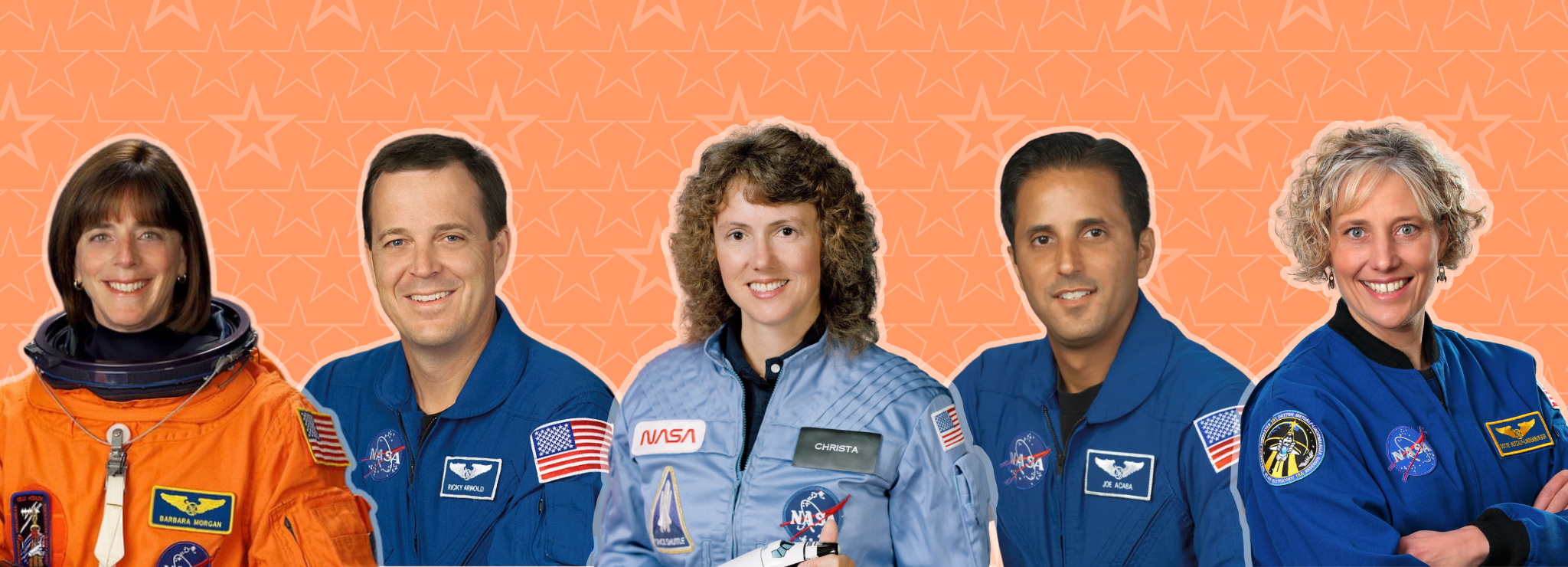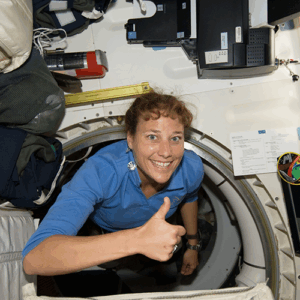
From the moment humans began naming constellations, space has fueled our imaginations. And for children, that sense of wonder is especially powerful. For them, a simple cardboard box or blanket fort can instantly transform into a rocket ship heading to the Moon.
NASA has long recognized this deep connection between space and childhood curiosity. In the 1980s, the agency set out to bring space closer to students by partnering with the people who know best how to spark young imaginations: teachers.
A Bold Vision: The Teacher in Space Program
 In 1984, President Ronald Reagan announced the Teacher in Space program, an initiative to honor educators and inspire students by sending a teacher as the first civilian to space. The program received more than 11,000 applications. Ultimately, Christa McAuliffe, a New Hampshire high school social studies teacher, was selected.
In 1984, President Ronald Reagan announced the Teacher in Space program, an initiative to honor educators and inspire students by sending a teacher as the first civilian to space. The program received more than 11,000 applications. Ultimately, Christa McAuliffe, a New Hampshire high school social studies teacher, was selected.
Christa planned to teach lessons from space and connect directly with millions of students on Earth. But the STS-51-L mission ended in tragedy during launch in 1986, claiming the lives of all seven crew members, including Christa. In the aftermath, the crew’s families founded Challenger Center, a nonprofit committed to continuing their educational mission and inspiring future generations.
Although NASA subsequently ended the Teacher in Space program, it did not abandon the dream of connecting spaceflight and education. That vision lived on in Barbara Morgan’s story.
Carrying the Flame: Barbara Morgan
 Barbara Morgan, an elementary school teacher from Idaho, had trained as Christa McAuliffe’s backup. After the Challenger tragedy, NASA asked her to continue as the Teacher in Space designee. She returned to teaching but remained connected to NASA through public outreach, curriculum development, and national STEM initiatives.
Barbara Morgan, an elementary school teacher from Idaho, had trained as Christa McAuliffe’s backup. After the Challenger tragedy, NASA asked her to continue as the Teacher in Space designee. She returned to teaching but remained connected to NASA through public outreach, curriculum development, and national STEM initiatives.
Then Barbara took her role one step further and joined the 1998 astronaut class. In 2007, she flew aboard STS-118 in a mission to help build the International Space Station (ISS). Her journey spanned 5.3 million miles and helped turn the dream into reality. And Barbara was only the beginning.
A New Era: Educator Mission Specialists
In 2004, NASA launched a new approach: the Educator Astronaut Project. In addition to providing educators with resources based on NASA missions, they would select several teachers to become fully trained astronauts. That meant undergoing rigorous physical and technical training, and even learning to speak Russian, just like any other member of NASA’s astronaut corps.
 That year, NASA selected three more teachers to train as astronauts: Joseph Acaba, Richard “Ricky” Arnold, and Dorothy “Dottie” Metcalf-Lindenburger. Each educator brought unique experiences to the role, but they were all passionate about learning and exploration.
That year, NASA selected three more teachers to train as astronauts: Joseph Acaba, Richard “Ricky” Arnold, and Dorothy “Dottie” Metcalf-Lindenburger. Each educator brought unique experiences to the role, but they were all passionate about learning and exploration.

Dottie, a high school teacher with a background in Geology, launched in 2010 with the STS-131 crew on a 15-day resupply mission to the ISS. She operated the station’s robotic arm, coordinated spacewalks, and helped transfer six tons of supplies to the ISS.

Joe and Ricky launched on STS-119 in 2009, delivering the final solar arrays to the ISS and conducting spacewalks. They also worked together on Christa’s Lost Lessons—a project with Challenger Center to complete and record the educational segments Christa McAuliffe had planned to deliver from space, fulfilling her dream decades later.
But their missions went far beyond technical achievements. These Educator Astronauts served as powerful science communicators, using their classroom experience to translate the complexities of spaceflight into compelling stories for students and the public. They became role models for a generation of STEM learners.
Their Legacy Lives On
Today, these Educator Astronauts continue to make an impact on the ground and in orbit.
- Joe Acaba is NASA’s current Chief of the Astronaut Office, the first educator to hold the agency’s top operational post for astronauts.
- Ricky Arnold spent over 200 days in space during his NASA career and now works with the University of Maryland’s Center for Environmental Science.
- Dottie Metcalf-Lindenburger led a NASA underwater mission to simulate working in extreme environments. She now consults on environmental issues and serves on Challenger Center’s Board of Directors.
- Barbara Morgan, now Professor Emeritus at Boise State University, remains active in educational initiatives and continues to work with NASA and international partners. She serves on Challenger Center’s Advisory Board.
Across their careers, these astronauts have remained committed to one thing above all: empowering the next generation through STEM education. Whether in classrooms or in orbit, they have brought space science to life for students everywhere.
Their stories prove that the best explorers are also teachers—and that investing in young minds is just as bold as launching into space.
